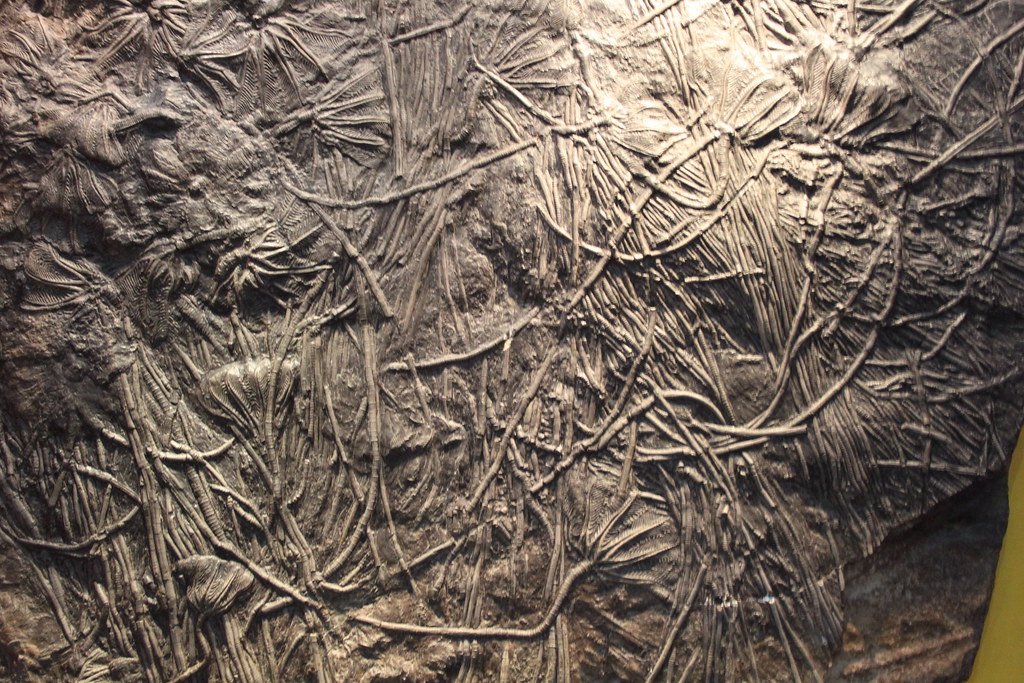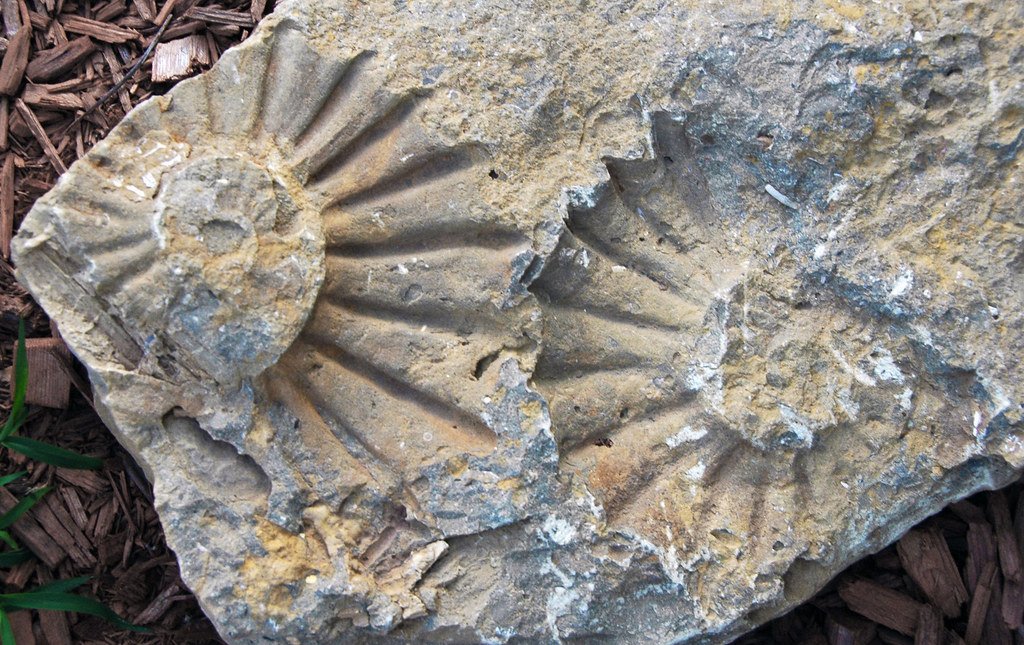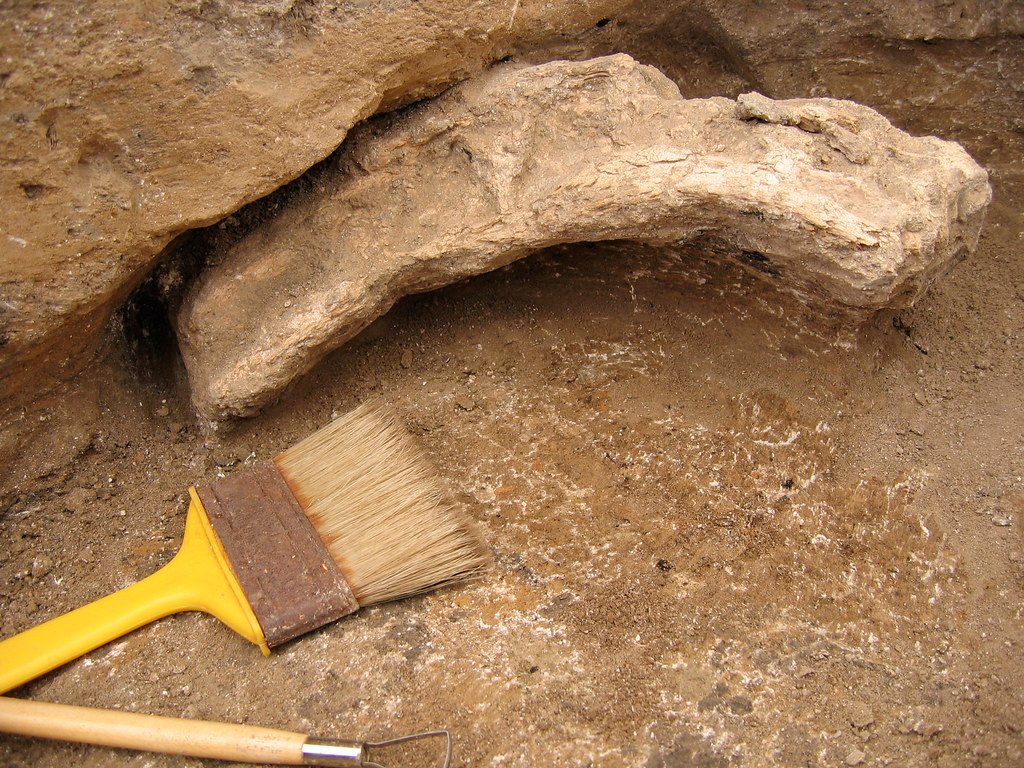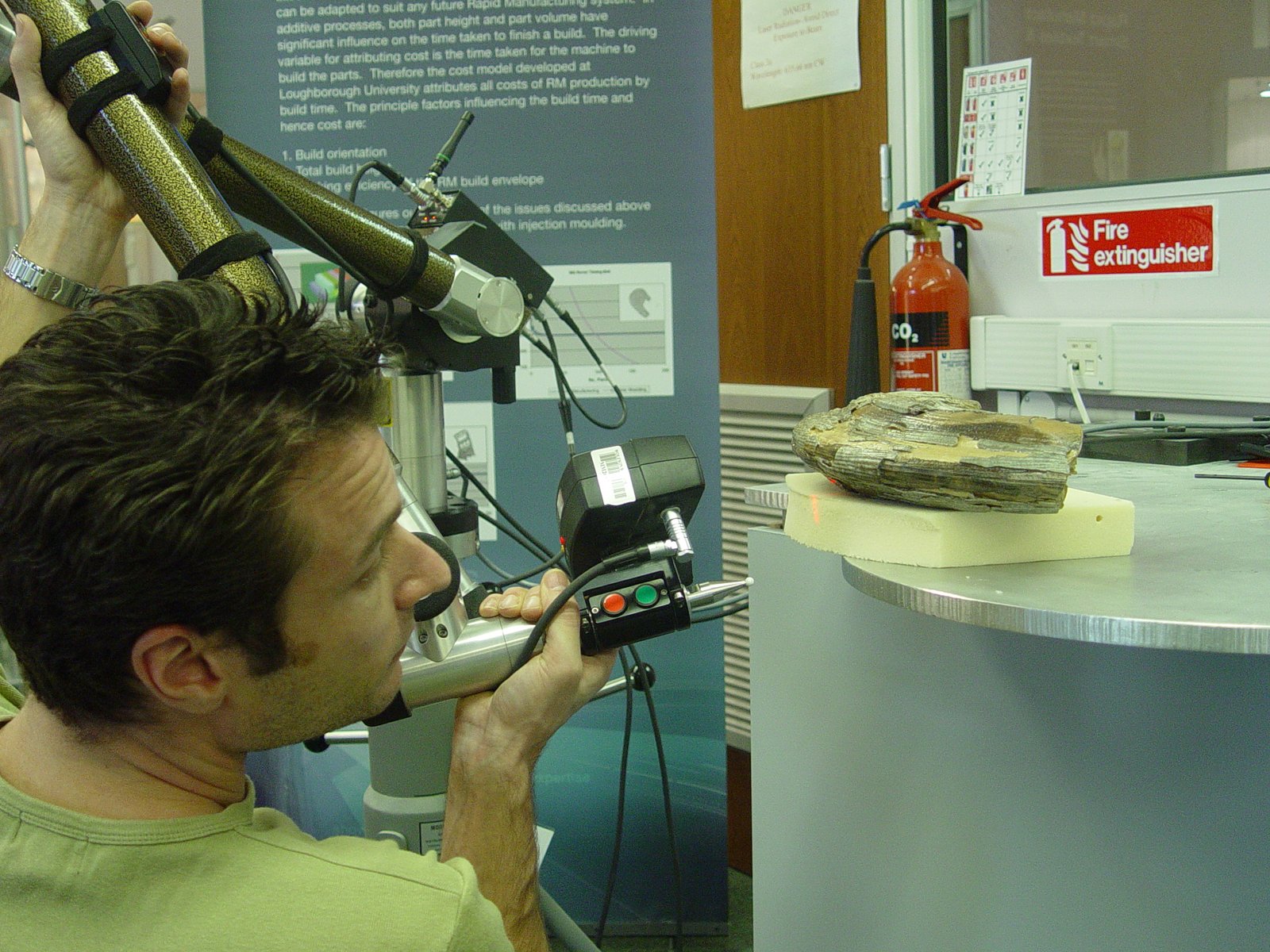Picture this: you’re scrolling through social media when suddenly a grainy photo appears claiming to show a 300-million-year-old screw embedded in ancient rock. Your heart skips a beat. Could this really be evidence of advanced ancient civilizations or even alien visitors? Before you share that post with wide-eyed excitement, let’s dive into one of the internet’s most persistent geological mysteries and separate the fascinating facts from the wild fiction.
The Viral Photo That Started It All

In 1998, a Russian team discovered what appeared to be a metallic screw-like object embedded in a 300-million-year-old rock formation. The photograph spread like wildfire across conspiracy websites, with claims that this tiny artifact proved the existence of advanced ancient technology. The image showed what looked unmistakably like a modern screw, complete with threads and a metallic appearance. Social media amplified these claims exponentially, turning a curious geological specimen into “proof” of time travelers or ancient aliens. What makes this story so compelling is how perfectly ordinary the object looks – it’s exactly what you’d expect to find in your toolbox, not in Paleozoic rock.
Why Our Brains Love Ancient Mystery Stories

Humans are naturally wired to find patterns and seek explanations for unusual phenomena, especially when they challenge our understanding of history. The idea that ancient civilizations possessed advanced technology taps into our deepest curiosities about human potential and our place in the universe. Our brains often jump to the most exciting conclusion first, rather than the most logical one. This cognitive bias, called the “availability heuristic,” makes dramatic explanations seem more likely than mundane ones. It’s the same reason we remember shark attacks more vividly than bee stings, even though bees are statistically more dangerous.
The Real Science Behind Fossilized Screws

What actually creates screw-like formations in ancient rocks involves a fascinating process called biomineralization and sedimentary replacement. When certain marine organisms die, their spiral shells or tube-like structures can become fossilized over millions of years. The original organic material gets replaced by minerals like iron oxide, pyrite, or calcite, creating metallic-looking formations. These natural “screws” form when sediments fill spiral-shaped shells or when mineral deposits follow the helical patterns of ancient sea creatures. The threading we see isn’t manufactured – it’s the preserved outline of biological structures that happened to evolve in spiral patterns for maximum efficiency in their underwater environments.
Meet the Real Culprits: Crinoid Fossils

The most likely explanation for screw-like fossils involves crinoids, marine animals that lived attached to the sea floor by long, segmented stalks. These “sea lilies” had cylindrical stems made up of disk-shaped segments that could create screw-like appearances when viewed from certain angles. When crinoids died and fossilized, their segmented stalks often became replaced by metallic minerals, giving them that manufactured look that fools modern observers. Crinoid fossils are incredibly common in rocks from the Paleozoic era, making them the prime suspects in most “ancient screw” cases. Think of them as nature’s original spiral staircase, designed millions of years before humans ever conceived of threaded fasteners.
The Curious Case of Pyritized Fossils

Pyrite, often called “fool’s gold,” plays a starring role in creating metallic-looking fossils that confuse amateur investigators. When organic material decomposes in oxygen-poor environments, pyrite crystals can form in place of the original tissues, creating shiny, metallic-looking objects. This process, called pyritization, can preserve incredible detail while giving fossils an artificial appearance that screams “manufactured.” Pyritized fossils often have that perfect metallic sheen that makes them look like they just rolled off an assembly line. The irony is that these are some of nature’s most beautiful preservation processes, yet they’re mistaken for evidence of ancient industry.
How Sedimentary Layers Tell Time Stories

Understanding geological time requires grasping the concept of sedimentary layering, where each rock layer represents a specific time period in Earth’s history. The 300-million-year-old rocks where these “screws” are found correspond to the Pennsylvanian period, when the supercontinent Pangaea was forming and vast swamp forests covered much of the land. During this time, no complex land animals existed that could create metal tools, let alone precision-threaded screws. The rock layers themselves are like pages in Earth’s diary, and they clearly show what life forms existed when. If advanced civilizations had lived 300 million years ago, we’d expect to find much more evidence than a single screw-like object.
The Problem with Dating Alleged Artifacts

One major red flag in ancient artifact claims is the lack of proper archaeological context and independent verification. Real archaeological discoveries undergo rigorous testing, peer review, and multiple dating methods to confirm their age and authenticity. The Russian “screw” was never subjected to these standard procedures, and no independent researchers have been able to examine the original specimen. Professional archaeologists always document exactly where, when, and how artifacts are found, because context is everything in determining authenticity. Without this crucial information, even the most intriguing objects remain scientifically worthless as evidence of anything extraordinary.
Why Hoaxes Spread Faster Than Facts

In our digital age, sensational claims travel at light speed while careful scientific analysis moves at the pace of peer review. A single dramatic photo can reach millions of people before experts even have time to examine the evidence properly. Social media algorithms actually favor controversial content because it generates more engagement, clicks, and shares than mundane explanations. The psychological principle of “confirmation bias” means people are more likely to share information that supports their existing beliefs about ancient mysteries. Meanwhile, the real scientific explanation – involving marine biology, fossilization processes, and geological time – seems boring by comparison, even though it’s infinitely more fascinating once you understand it.
The Role of Mineral Replacement in Fossilization

The process that creates metallic-looking fossils involves mineral replacement on a molecular level, where original organic compounds are slowly substituted with inorganic minerals. This happens over millions of years as groundwater carries dissolved minerals through porous rock formations. Iron-rich minerals like hematite and goethite are particularly good at creating metallic appearances in fossils. The replacement process can be so precise that it preserves cellular details while completely changing the chemical composition of the specimen. This is why some fossils look exactly like the original organism but feel and appear metallic – they’re essentially mineral sculptures created by geological processes.
Ancient Marine Environments and Spiral Shells

The Paleozoic seas teemed with creatures that evolved spiral and helical structures for functional reasons, not aesthetic ones. Gastropods (snails) developed spiral shells to maximize internal volume while minimizing surface area, making them more efficient and harder for predators to crush. Ammonites created intricate spiral chambers that helped them control buoyancy in ancient oceans. These spiral patterns were so successful that they appeared independently in dozens of different marine species throughout geological history. When these creatures fossilized, their spiral forms were preserved, creating natural “screws” that had nothing to do with technology but everything to do with evolutionary efficiency.
The Science of Bioturbation and Trace Fossils

Sometimes the “screws” found in ancient rocks are actually trace fossils – preserved evidence of ancient animal behavior rather than the animals themselves. Marine worms created spiral burrows in seafloor sediments, and these tunnels could become filled with different minerals, creating screw-like structures. This process, called bioturbation, shows how ancient creatures modified their environment in ways that left permanent records in rock. The helical burrows of ancient worms can look remarkably like manufactured objects when preserved in the right conditions. These trace fossils are actually more valuable to scientists than body fossils because they show us how ancient animals lived and behaved, not just what they looked like.
Debunking Through Scientific Method

Real scientists approach unusual claims with systematic skepticism, using established methods to test extraordinary assertions. When examining alleged ancient artifacts, researchers look for multiple lines of evidence: chemical composition, crystalline structure, geological context, and comparative analysis with known specimens. The scientific method requires reproducible results, which means other researchers must be able to examine the same evidence and reach similar conclusions. In the case of ancient “screws,” every properly analyzed specimen has turned out to be a natural formation rather than manufactured technology. This doesn’t make the discoveries less interesting – it makes them more fascinating because natural processes created something that looks artificial.
The Beauty of Natural Spiral Patterns

Nature has been creating perfect spirals and helical structures for billions of years, following mathematical principles that humans only recently discovered. The Golden Ratio appears in nautilus shells, galaxy formations, and DNA structure, showing that spiral patterns are fundamental to how matter and energy organize themselves. From the double helix of genetics to the spiral arms of the Milky Way, these patterns emerge naturally from physical and chemical processes without any conscious design. When we find spiral fossils in ancient rocks, we’re witnessing the same mathematical principles that govern everything from flower petals to hurricane formations. The real mystery isn’t who made these “screws” – it’s how nature knew advanced mathematics before mathematicians were even evolved.
Modern Technology Meets Ancient Mysteries

Today’s advanced imaging techniques and chemical analysis methods can reveal the true nature of mysterious fossils with unprecedented precision. X-ray crystallography can identify mineral composition down to the atomic level, while CT scanning can reveal internal structures without damaging specimens. These technologies consistently show that alleged ancient artifacts are natural formations created through well-understood geological processes. Electron microscopy can even reveal the original cellular structure of fossilized organisms, proving their biological origin. The irony is that our actual advanced technology keeps debunking claims of ancient advanced technology, but somehow the debunking never gets as much attention as the original sensational claims.
What Real Ancient Technology Actually Looked Like

Genuine ancient human technology from 300 million years ago would be unrecognizable to us because no complex land animals even existed at that time. The most advanced life forms were early reptiles and amphibians that had just begun to colonize dry land from their aquatic origins. Human ancestors wouldn’t appear for another 250 million years, and even simple stone tools wouldn’t be invented until about 3 million years ago. If we found actual evidence of advanced technology from the Paleozoic era, it would revolutionize our understanding of evolution, physics, and the history of intelligence in the universe. Such a discovery would be the biggest scientific breakthrough in human history, not a curiosity piece circulating on conspiracy websites.
The Importance of Geological Context

Professional geologists can read rock formations like history books, identifying the environmental conditions that existed when each layer was deposited. The rocks that allegedly contain 300-million-year-old screws formed in shallow marine environments where coral reefs and early forests flourished. The fossil record from this period is incredibly rich and well-documented, showing us exactly what kinds of life existed and what the climate was like. Any genuine technological artifacts from this time would be completely out of place in the geological record, like finding a smartphone in a medieval castle foundation. The consistency of the fossil record across millions of years and thousands of locations makes it virtually impossible for advanced ancient civilizations to have existed without leaving extensive evidence.
Why Critical Thinking Matters More Than Ever

In an age of information overload, developing strong critical thinking skills becomes essential for distinguishing between fascinating facts and entertaining fiction. The scientific method provides tools for evaluating claims systematically: examining evidence, considering alternative explanations, and seeking independent verification. When we encounter extraordinary claims, asking simple questions can reveal their weaknesses: Who discovered this? Where is the original specimen? What do independent experts say? Has the finding been published in peer-reviewed journals? These questions don’t kill the wonder – they channel it toward genuine mysteries that are even more amazing than made-up ones.
The Real Wonders Hidden in Ancient Rocks

While debunking false mysteries might seem like destroying magic, it actually reveals far more incredible truths about our planet’s history. The fossil record shows us that Earth has been home to creatures more bizarre and wonderful than any science fiction: armored fish the size of school buses, forests of 100-foot tall mushrooms, and marine reptiles that make modern whales look tiny. The processes that create fossils involve chemistry, physics, and biology working together over millions of years to preserve snapshots of ancient life. Every legitimate fossil tells a story about evolution, climate change, extinction, and survival that’s more gripping than any conspiracy theory. The real ancient world was far stranger and more beautiful than our imaginations typically conjure.
Learning to Love Natural Explanations

Understanding the natural processes behind mysterious phenomena doesn’t diminish their wonder – it amplifies it exponentially. When you realize that the “screw” in ancient rock represents millions of years of evolution, fossilization, and mineral replacement, it becomes infinitely more impressive than if some ancient person had simply dropped a manufactured bolt. The spiral patterns we see preserved in stone connect us to mathematical principles that govern the entire universe, from the smallest seashells to the largest galaxies. Nature’s engineering often surpasses human technology in elegance, efficiency, and durability. Those spiral fossils have survived conditions that would destroy any human-made screw in minutes, yet they’ve maintained their form for hundreds of millions of years.
The next time you encounter a sensational claim about ancient artifacts or mysterious objects, remember that the truth is usually more extraordinary than fiction. Those 300-million-year-old “screws” represent one of nature’s most elegant solutions to engineering challenges, created through processes more complex and beautiful than any manufacturing technique humans have devised. The real question isn’t whether ancient civilizations had advanced technology – it’s whether we’re advanced enough to appreciate the incredible technology that nature has been perfecting for billions of years. What other “manufactured” objects in your world might actually be masterpieces of natural engineering?




